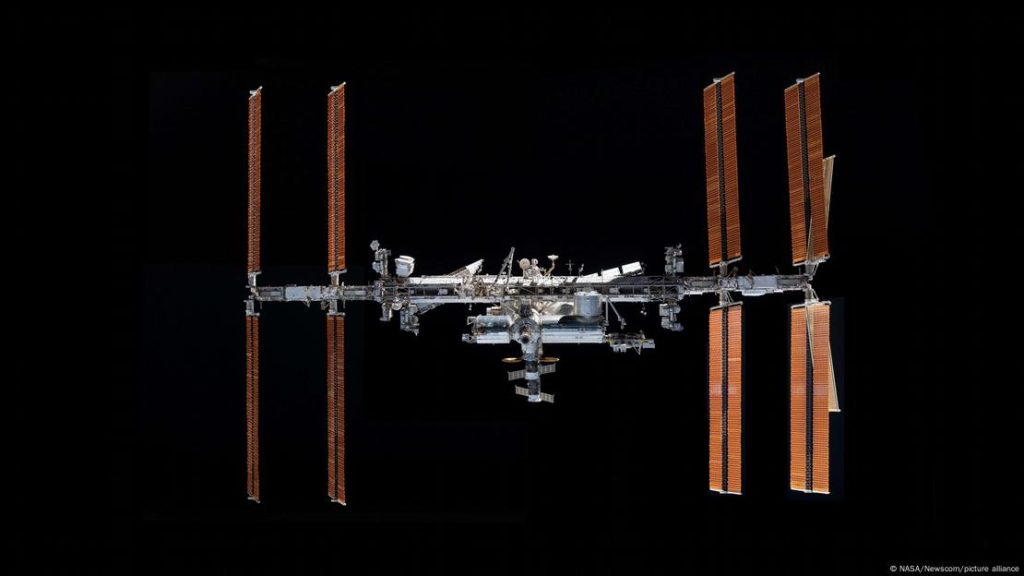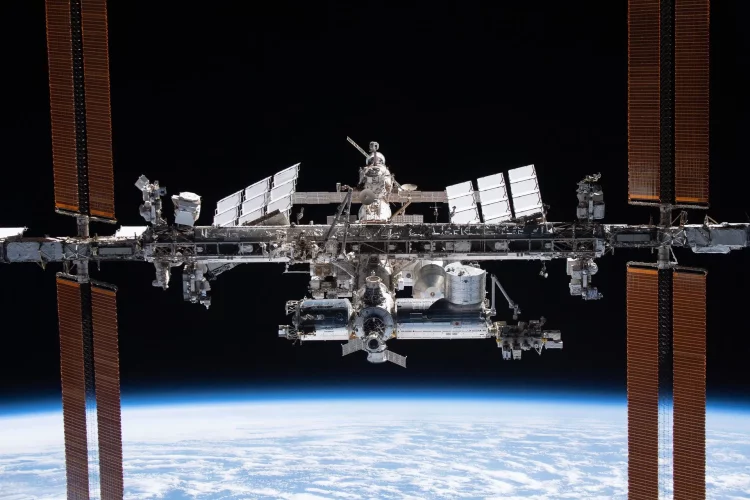Introduction
NASA’s commitment to advancing human spaceflight is epitomized by its ongoing efforts to enhance the safety and efficiency of missions to the International Space Station (ISS). The recent announcement of updates regarding Crew Flight Tests and space station missions marks a significant milestone in the evolution of crewed space exploration. This article aims to provide a comprehensive understanding of the Crew Flight Test, its implications for future space missions, and its broader impact on human space exploration.
Historical Context of Crewed Spaceflight
Crewed spaceflight has a rich history dating back to the early 1960s, marking humanity’s first ventures beyond Earth’s atmosphere. The dawn of the space age began with the launch of Sputnik 1 by the Soviet Union in 1957, followed by the successful launch of Yuri Gagarin aboard Vostok 1 in 1961. Gagarin’s mission was a monumental achievement, showcasing the potential for human space travel.
In the decades that followed, space agencies around the world developed increasingly sophisticated spacecraft and missions. NASA’s Mercury, Gemini, and Apollo programs played pivotal roles in advancing crewed spaceflight capabilities. The Apollo program, in particular, achieved the historic lunar landings of Apollo 11 in 1969, with astronauts Neil Armstrong and Buzz Aldrin becoming the first humans to walk on the Moon.
As the space program evolved, the focus shifted to long-duration missions and international collaboration. The development and operation of the International Space Station (ISS), a collaborative effort involving NASA, Roscosmos, ESA, JAXA, and CSA, represent a new era of space exploration. The ISS serves as a microgravity laboratory and a testbed for technologies and systems necessary for future deep space missions.
The Role of Crew Flight Tests
Crew Flight Tests are a crucial component of space mission preparation, designed to validate the performance and safety of spacecraft before they are used for operational missions. These tests involve a series of rigorous evaluations to ensure that spacecraft systems, procedures, and crew protocols meet the highest standards of reliability and safety.
- Objective of Crew Flight Tests: The primary objective of Crew Flight Tests is to verify that spacecraft can safely and effectively carry astronauts to and from space. This includes testing the spacecraft’s life support systems, propulsion, avionics, and other critical components. The tests also evaluate crew interfaces, emergency procedures, and mission operations.
- Testing Protocols: Crew Flight Tests follow a structured protocol involving both ground-based simulations and actual spaceflights. Ground-based simulations include extensive testing in environments that mimic space conditions, such as vacuum chambers and neutral buoyancy pools. Spaceflight tests involve launching the spacecraft with a crew onboard to assess its performance in real space conditions.
- Significance of the Test Results: The results of Crew Flight Tests provide valuable data for refining spacecraft designs and mission plans. Successful completion of these tests demonstrates that the spacecraft is ready for operational missions, providing confidence in its safety and performance.
Recent Updates on Crew Flight Tests and Space Station Missions
NASA has recently announced updates on Crew Flight Tests and space station missions, reflecting the agency’s ongoing efforts to enhance crewed spaceflight capabilities. Here’s a detailed look at the latest developments:
- Crew Flight Test Announcements: NASA has outlined plans for upcoming Crew Flight Tests to ensure the readiness of new spacecraft and technologies. These tests will involve various spacecraft, including NASA’s Orion spacecraft, SpaceX’s Crew Dragon, and Boeing’s CST-100 Starliner. Each spacecraft will undergo rigorous testing to validate its performance and safety features.
- Space Station Missions: NASA continues to conduct regular missions to the ISS, focusing on scientific research, technology demonstration, and international collaboration. Recent updates include new mission schedules, crew assignments, and research objectives. The ISS remains a key platform for studying the effects of long-duration spaceflight on the human body and developing technologies for future deep space missions.
- Technological Advancements: Recent updates highlight advancements in spacecraft technology, including improvements in life support systems, communication systems, and automation. These advancements aim to enhance crew safety, mission efficiency, and overall spacecraft performance.
Technical Aspects of Crew Flight Tests
Crew Flight Tests involve a range of technical evaluations designed to ensure that spacecraft meet rigorous performance and safety standards. Here are some key technical aspects:
- Life Support Systems: One of the critical components tested during Crew Flight Tests is the life support system. This system provides astronauts with breathable air, regulates temperature and humidity, and removes carbon dioxide and other contaminants. The tests ensure that the life support system functions effectively under various conditions.
- Propulsion and Avionics: The spacecraft’s propulsion and avionics systems are also tested to verify their performance. Propulsion systems are responsible for maneuvering the spacecraft, while avionics systems control navigation, communication, and mission operations. The tests assess the reliability and accuracy of these systems.
- Crew Interfaces: Testing the crew interfaces involves evaluating how astronauts interact with the spacecraft’s systems and controls. This includes assessing the usability of control panels, displays, and communication devices. Ensuring that crew interfaces are intuitive and user-friendly is essential for mission success.
- Emergency Procedures: Crew Flight Tests also include simulations of emergency scenarios, such as system failures or spacewalk emergencies. These simulations test the crew’s ability to respond effectively and ensure that emergency procedures are robust and well-practiced.
Impact on Future Space Missions
The successful completion of Crew Flight Tests has far-reaching implications for future space missions. Here’s how these tests impact upcoming missions and broader space exploration goals:
- Increased Safety: Crew Flight Tests play a crucial role in enhancing astronaut safety. By identifying and addressing potential issues before operational missions, these tests reduce the risk of accidents and improve overall mission safety. This is particularly important for deep space missions, where the stakes are higher.
- Enhanced Mission Capabilities: The data collected from Crew Flight Tests contributes to the development of more capable and reliable spacecraft. This, in turn, expands the range of missions that can be undertaken, including those involving distant planets, moons, and other celestial bodies.
- International Collaboration: Crew Flight Tests and space station missions often involve international partners, highlighting the collaborative nature of modern space exploration. The results of these tests contribute to shared knowledge and technological advancements, fostering stronger international cooperation.
- Technological Innovation: The challenges encountered during Crew Flight Tests drive technological innovation. Solutions developed to address these challenges often lead to new technologies and techniques that benefit other areas of space exploration and beyond.

Case Studies and Historical Examples
Several historical missions have demonstrated the importance of Crew Flight Tests and their impact on space exploration. Here are a few notable examples:
- Apollo Program: The Apollo program included several Crew Flight Tests to ensure the success of the lunar landings. The Apollo 7 mission, the first crewed flight of the Apollo spacecraft, provided critical data on spacecraft performance and crew operations.
- Space Shuttle Program: The Space Shuttle program also involved extensive Crew Flight Tests. The first flight of the Space Shuttle Columbia in 1981 tested various systems and procedures, paving the way for future shuttle missions and space station assembly.
- Commercial Crew Program: NASA’s Commercial Crew Program includes Crew Flight Tests for spacecraft developed by private companies, such as SpaceX and Boeing. The successful Crew Dragon Demo-2 mission in 2020 marked a significant milestone, demonstrating the capabilities of commercial spacecraft for crewed spaceflight.
Challenges and Considerations
Despite the advancements, Crew Flight Tests face several challenges that must be addressed:
- Technical Complexity: The technical complexity of spacecraft systems and mission operations requires careful planning and execution. Addressing these complexities demands extensive testing and analysis.
- Cost and Resources: Conducting Crew Flight Tests involves significant costs and resources. Balancing these requirements with mission objectives and budget constraints is a key consideration for space agencies.
- Schedule Management: Coordinating Crew Flight Tests with other mission schedules and activities can be challenging. Effective scheduling and project management are essential for successful test execution.
- Safety Protocols: Ensuring the safety of astronauts during Crew Flight Tests is paramount. Developing and implementing robust safety protocols is critical for minimizing risks and addressing potential issues.
Future Prospects and Missions
Looking ahead, Crew Flight Tests will continue to play a vital role in advancing human space exploration. Future prospects include:
- Artemis Program: NASA’s Artemis program aims to return humans to the Moon and establish a sustainable presence. Crew Flight Tests for the Orion spacecraft and other systems will be crucial for achieving the program’s goals.
- Mars Missions: Upcoming missions to Mars will require advanced spacecraft and technologies. Crew Flight Tests will support the development of systems needed for long-duration space travel and surface operations on Mars.
- Deep Space Exploration: Exploration beyond the Moon, including missions to asteroids and other planets, will benefit from advancements in Crew Flight Tests. These missions will rely on proven spacecraft and technologies to navigate and operate in deep space.
- International Collaboration: Future space missions will involve increasing international collaboration. Crew Flight Tests will contribute to the development of shared technologies and capabilities, fostering global partnerships in space exploration.
Conclusion
NASA’s updates on Crew Flight Tests and space station missions reflect the agency’s dedication to advancing human spaceflight and exploration. By conducting rigorous testing and validating spacecraft performance, NASA ensures that future missions are safe, reliable, and capable of achieving ambitious goals. The advancements in Crew Flight Tests not only enhance current missions but also pave the way for future space exploration endeavors


















































Discussion about this post